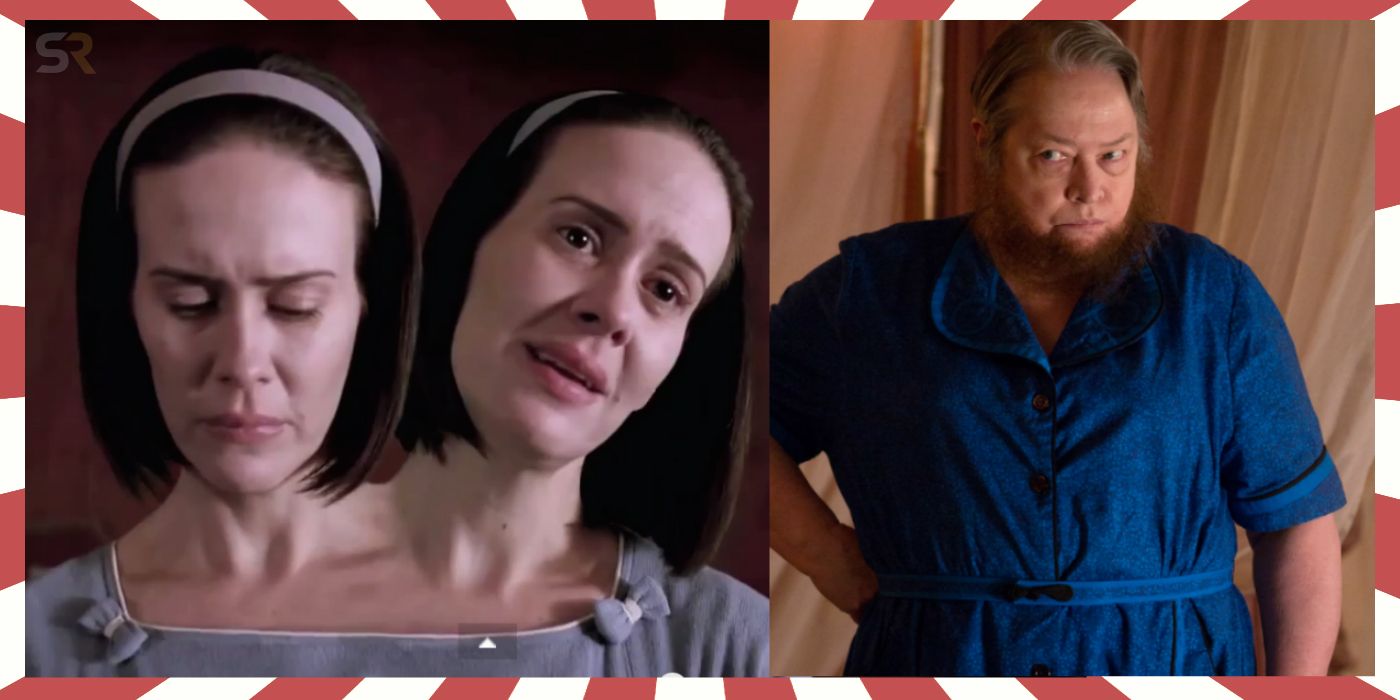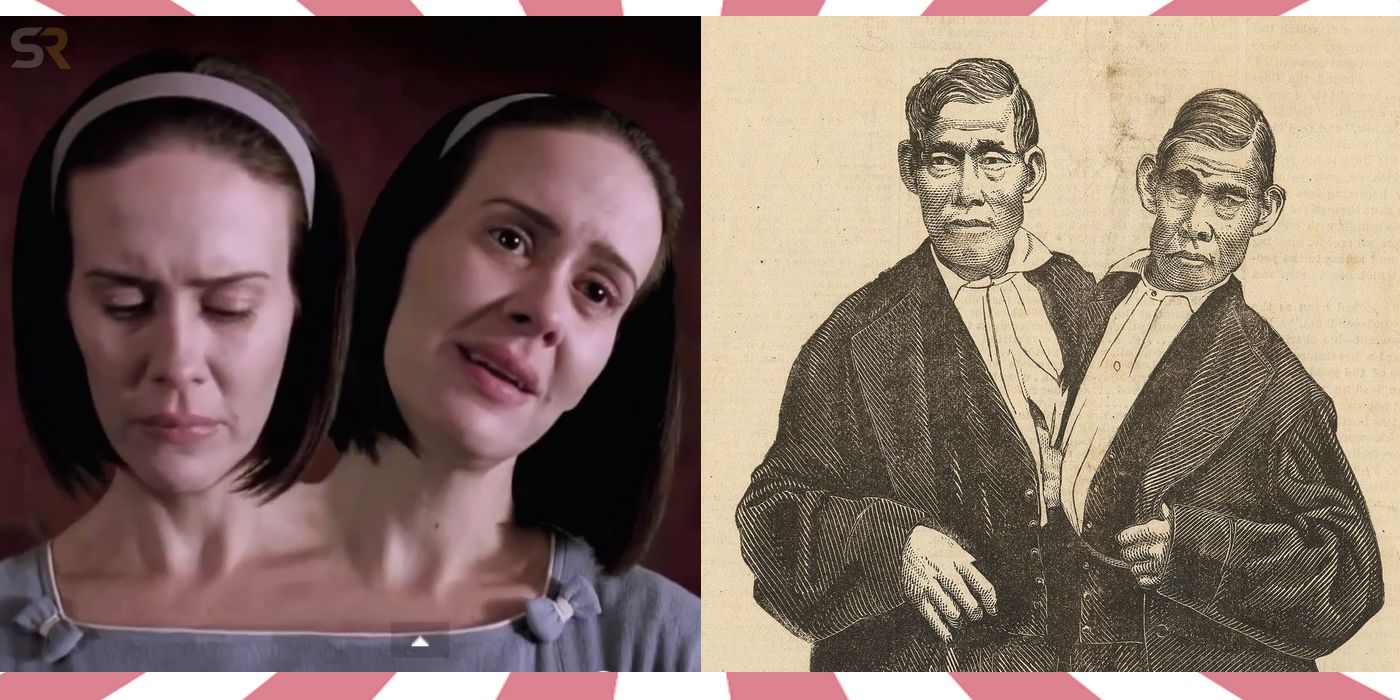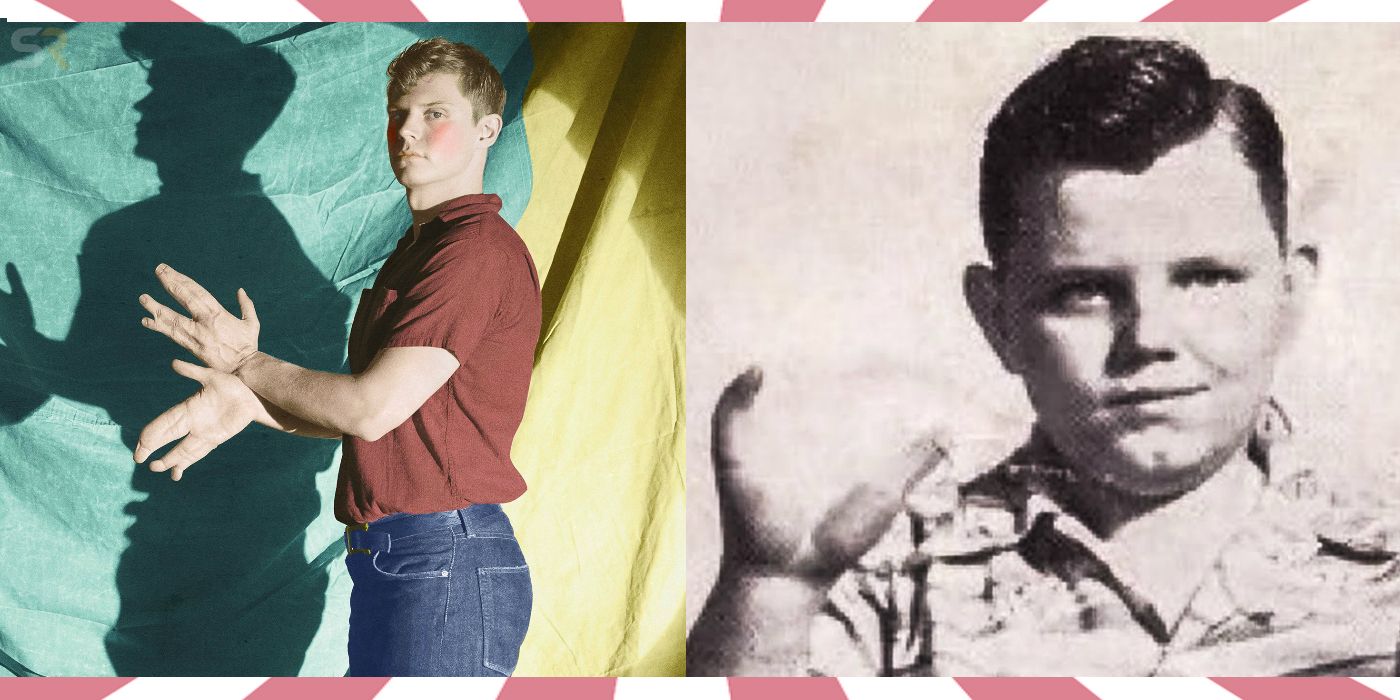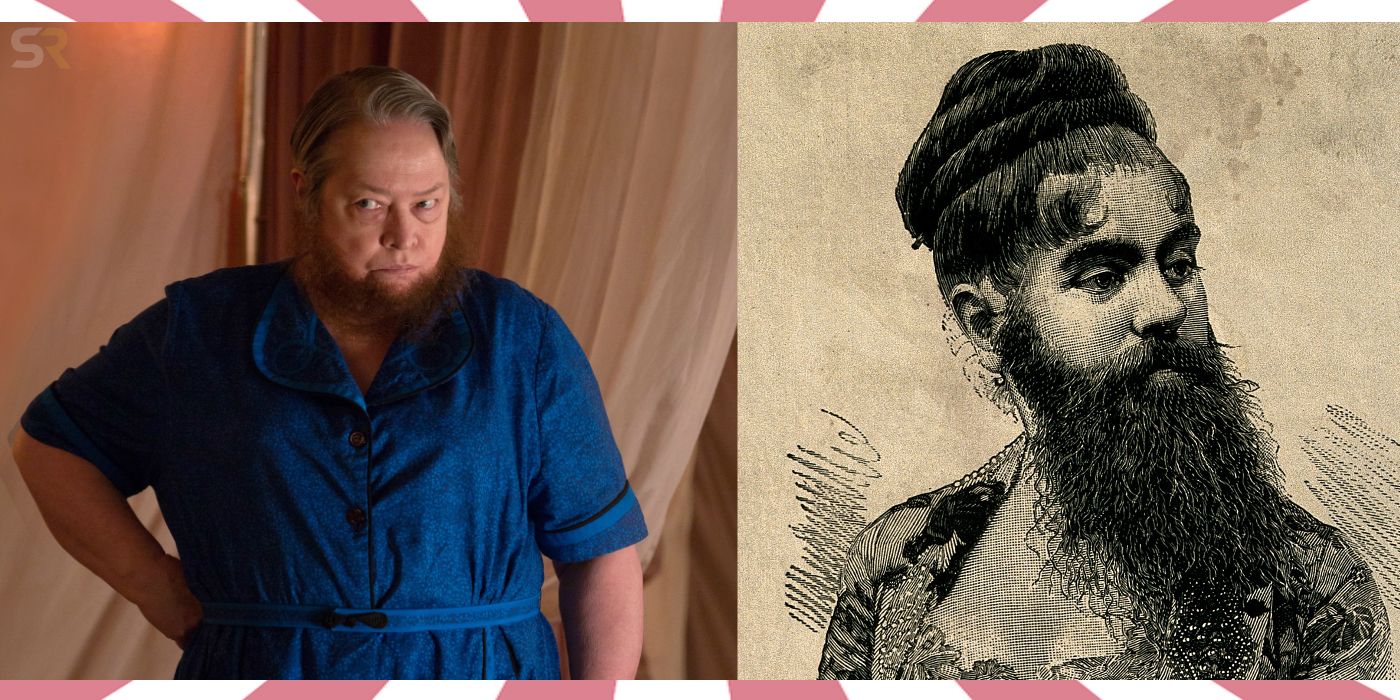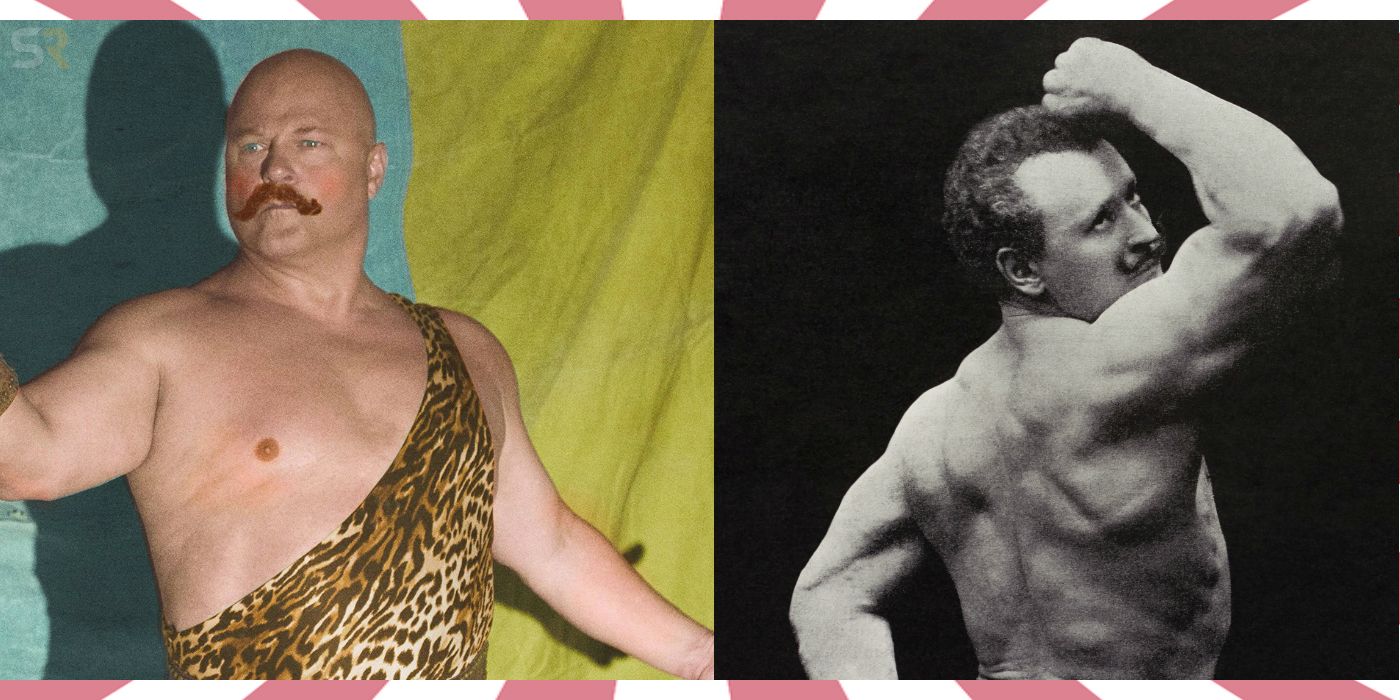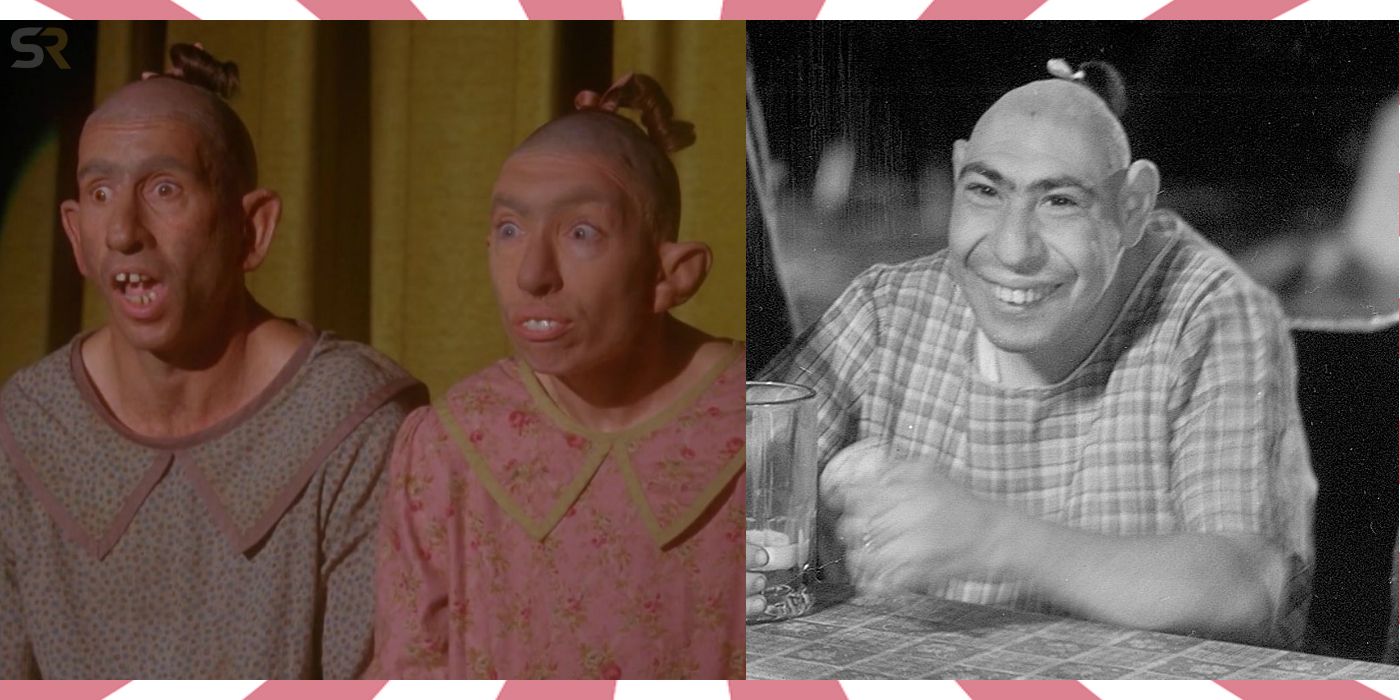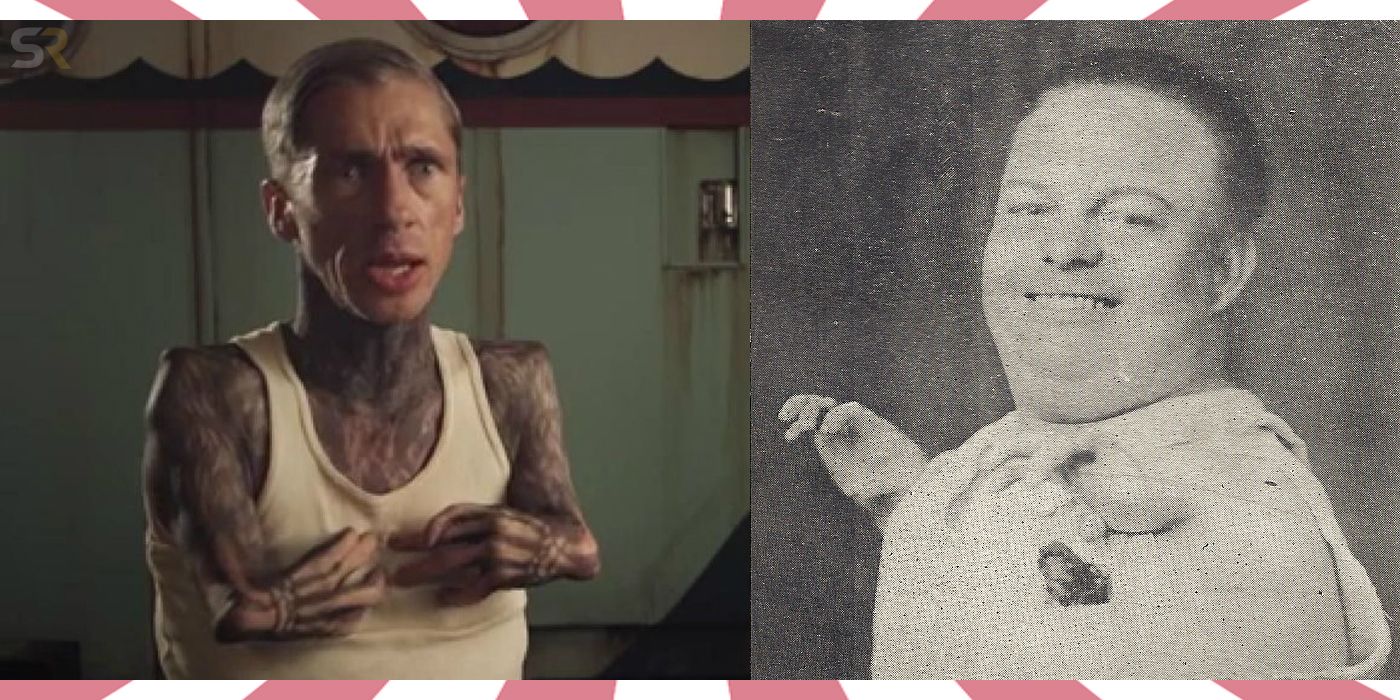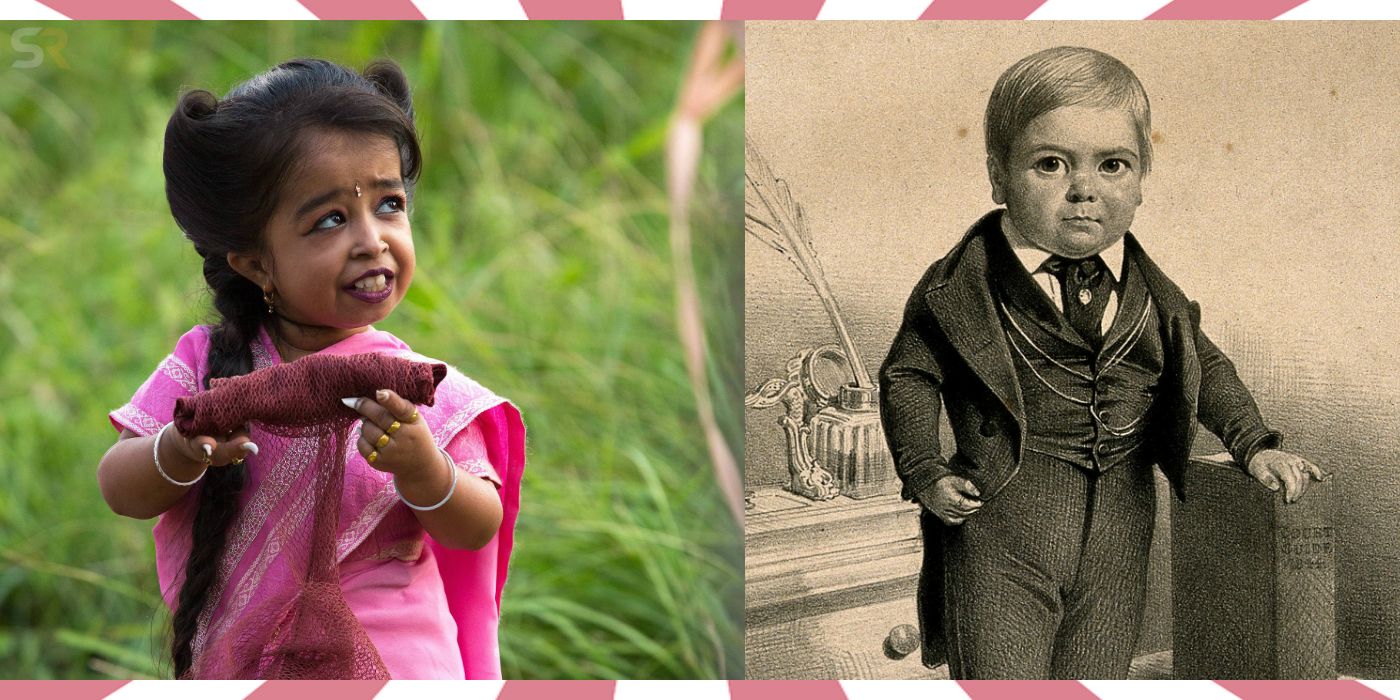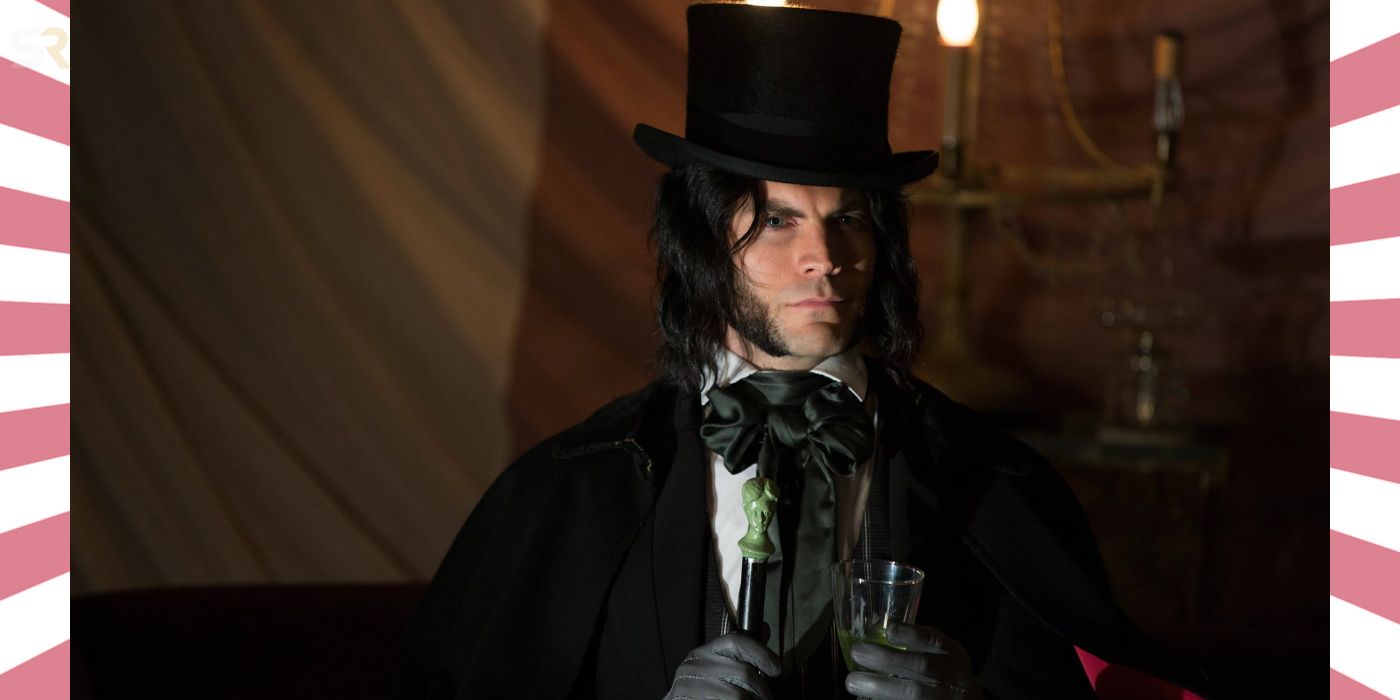American Horror Story: Freak Show presents audiences with the “freaks”, a varied cast of colorful characters many of whom are actually based on historical figures from circus sideshows of time past.
Run by an enchanting but wicked Elsa Mars (Jessica Lange), the freak show in season four is a tight-knit family of society’s least wanted. As the show plunges the characters into preternatural hardship, ghostly hauntings, and murderous clowns, audiences come to understand just how resilient the freaks can be.
Circus sideshows put performers’ disabilities on display. Often the most important and lucrative attraction, freakshows are an ambivalent part of circus history, rife with both opportunity and exploitation. AHS is not a show without problems, but its fourth season does attempt to highlight the hostile living conditions “freak” performers had to endure, shining a modern light on historical realities.
The Story Behind: Bette And Dot Tattler
Bette and Dot Tattler (Sarah Paulson) are conjoined twins, a circus act that made its most famous appearance in the mid-1800s. Chang and Eng were born in Siam, now Thailand, in 1811. Conjoined twins who, similarly to Bette and Dot, were fused at the shoulder, they coined the term “Siamese twins” for their performance. They established their fame touring America so successfully, they were able to eventually purchase property in North Carolina. Bette and Dot end the season pregnant. Similarly, Chang and Eng had children, albeit slightly more with 21 kids between them.
The Story Behind: Jimmy Darling
Jimmy Darling (Evan Peters), with his prosthetic ectrodactyly hands, is based on Grady Stiles, Jr. Afflicted with a rare congenital deformity known as “Lobster Claw” syndrome, Stiles, like Jimmy, came from a family of freakshow performers. The condition first affected his grandfather in 1805. Born in 1937, Stiles was a considerably less likeable character than Jimmy. An abusive drunk, Stiles murdered his daughter’s fiancé in cold blood.
The Story Behind: Ethel Darling
Ethel Darling, played by AHS staple Kathy Bates, is season four’s resident “Bearded Lady”, an act that spans history. In the 19th century, the bearded Swiss-born Madame Josephine Clofullia toured America as a curiosity. In 1865, Annie Jones was born covered head-to-toe in hair. At less than a year old, Annie was displayed in Barnum’s attractions as “The Infant Essau”, eventually growing up to become one of the most famous bearded ladies in history. In her later career, she would campaign against the use of the word “freak” to describe her fellow performers.
The Story Behind: Dell Toledo
People need look no further than Arnold Schwarzenegger to understand the lasting popularity of the “Strong Man”. Dell Toledo (Michael Chiklis) is based on one of the most common sideshow acts in history. Born in 1878, Arthur Saxon was one such “strong man”. He toured America the “Iron-Master”, performing with equipment that highlighted the muscles of his back, legs, and arms.
The Story Behind: Pepper and Salty
Pepper (Naomi Grossman) is one of the most beloved characters in Freak Show. Both she and her husband, Salty (Christopher Neiman) were born with microcephaly, a condition where the face grows at a normal rate but the head does not, often leading to diminished mental capacity. In circus history, people with microcephaly, such as Simon Metz, were presented as “pinheads”. Born in 1890, Metz operated under the stage name “Schlitzie”. His success in circus sideshows eventually led to a role in controversial 1932 movie Freaks.
The Story Behind: Amazon Eve
Amazon Eve is played by the 6’8 model and fitness trainer Erika Ervin. Her historical basis was over a foot taller. Anna Haining Swan was born in 1846. By 15, she was 7’11. She met her husband, Martin Van Buren Bates, while performing at a circus. Although Bates claimed his wife was “only” 7’4, she was famously taller than his 8’. They married in 1871 and were touted as the “giant couple”, touring over the summer with the W.W. Cole Circus.
The Story Behind: Paul
Paul (Mat Fraser), with his neck-down tattoos and phocomelia, a condition that stunts the development of arms, plays the “Illustrated Seal”. His historical counterpart, Stanislaus “Stanley” Berent, had the same condition and went by a similar name: Sealo. Born in 1901, Stanley went on to perform in all major sideshows and dime museums across America. The similarity in stage names come from the fact that “phocomelia” literally translates to “seal arms”. He performed for over three decades, only retiring in 1976. In the 70s, he joined a band of performers and Ward Hall (which at the time ran a sideshow) to successfully sue the state of Florida to repeal a 1921 law that banned the exhibition of the “handicapped”.
The Story Behind: Ma Petite
Ma Petite is played by Jyoti Amge, the world’s smallest living woman. P.T. Barnum was one of the first showrunners to exploit the attraction potential of little people. Barnum discovered Charles Stratton at age four. At 3’, he was touted as slightly older to add to the spectacle and went on to become a talented performer: singing, acting, dancing, doing impressions. He performed in Barnum’s show for over four decades under the stage name General Tom Thumb, up to his death at age 45. Like Elsa Mars and Little Ma, Stratton and Barnum had a close relationship, if tumultuous. Stratton married Lavinia Warren Bump, another little person performing for Barnum, in 1863, a spectacle which Barnum sold tickets to, calling it the “Fairy Wedding.”
The Story Behind: Edward Mordrake
Edward Mordrake (Wes Bentley) is a character in the fourth season ripped directly out of urban legends. A nineteenth century aristocrat, he was born with a face on the back of his head, which supposedly was able to display emotion and would whisper to him at night. Although he is very much a real threat in the show, historically he was proven to be a fabrication by fiction writer Charles Lotin Hildreth, a character from a sensationalist article in the 1895 Boston Sunday Post.
The fate of the show’s freaks is a much more gruesome end than many of their real-life parallels. Although the fourth season was met with mixed reviews by fans and critics alike, there is no denying that American Horror Story: Freak Show did its historical homework when crafting its sideshow performers.

